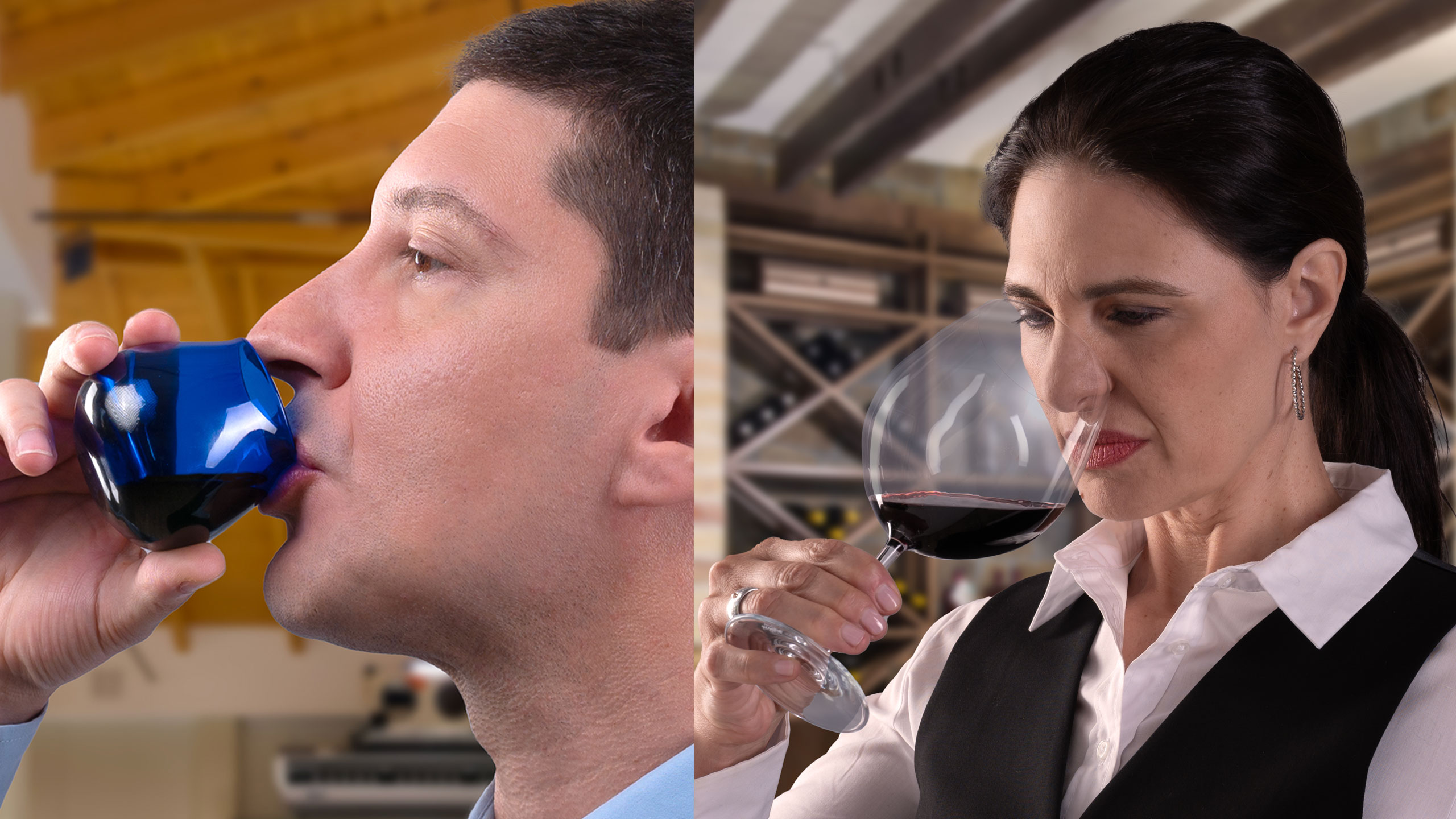Wine and EVO oil tasting: a parallel sensory journey
In the world of gastronomy, wine and extra virgin olive oil (EVO) are two of the greatest expressions of food culture, true ambassadors of the territories from which they come. Tasting them means going on a sensory journey involving smell, taste and sight. Although they possess unique characteristics, the tasting of both follows parallel lines, where each step is essential to appreciate their quality and complexity.
Olfaction: the first encounter
The sense of smell is the sense that more than any other prepares us for the experience of taste, and it is essential for approaching both wine and oil. A wise taster, in fact, knows that smell is the first indication of quality.
In wine, when you approach the nose to the glass, it reveals an aromatic range that varies according to grape variety, winemaking process and age of the wine itself. Notes of fruit, spice, flowers or even earthier tones emerge in a bouquet that can range from freshness to complexity. A young wine, for example, will have fresh and fruity aromas, while a more mature wine will have more complex and nuanced, woody notes that tell of its evolution.
Extra Virgin Olive Oil also knows how to express its essence through the sense of smell. A good Evo Oil, in fact, is characterized by a fresh and fruity aroma, with scents ranging from green and herbaceous to slightly bitter or spicy, depending on the variety of olives used. The sense of smell anticipates the taste, so if the aroma is herbaceous and lively, the flavor will probably be just as fresh and vigorous. A stale oil, on the other hand, will have a rancid smell that signals poor quality or a product that is too old.
Taste: the complex experience of the palate
While the sense of smell gives us a sort of preview of the tasting, it is with taste that we have the full experience. Each sip, whether of wine or oil, tells a story of balance, tension and persistence.
On the palate, the wine reveals its personality to us. The first thing to consider is the balance between sweetness, acidity, tannins and body. A good wine should be harmonious, with a clear distinction between its components without one overpowering the other. A young wine, often fresher and more acidic, will have a lively, crisp sensation. An aged wine, on the other hand, may be rounder, with smoother tannins and a length of flavor that lingers delicately in the mouth. Extra Virgin Olive Oil has a flavor profile that varies widely according to its variety. Good oil, in fact, offers a balance of bitter, spicy and sweet, which should express the freshness of the olives from which it was made. oil A quality extra virgin olive oil is characterized by a hint of spiciness at the back of the throat and a bitter sensation which, if well balanced, gives complexity without being excessive. Its texture can vary from light and soft to more full-bodied and velvetier. The persistence of flavor, which leaves a trace on the palate, is one of the indicators of quality.
Sight: reading the label
Sight is the first impact we have with a product, but it is also important to understand what we are about to taste. However, in the case of oil, color should not influence our judgment. For this reason, tasting glasses are blue. The real key to fully appreciating the product lies in carefully reading the label, which reveals much more than we can imagine.
It is on the label that you read the key information to understand what you are buying, especially when it comes to organic products. The European BIO logo-the green leaf with stars-is a guarantee that the product was obtained under strict environmental and production standards.
In fact, EU organic certification ensures that a wine or oil has been produced following precise standards set by Regulation (EU) 2018/848. This means cultivation without synthetic chemical pesticides, protection of biodiversity, and natural transformation processes.
The wine label tells us important things such as the grape variety, vintage, area of production, and certifications (BIO, DOC, DOCG, IGT). These details inform us about the origin and quality of the wine. A BIO wine, for example, comes from a protected area and follows very precise rules in winemaking.
Even for EVO oil, the label is important to understand the quality. BIO, PDO and PGI certifications guarantee the authenticity of the product. In addition, information such as the type of olive, production area, and extraction method are important signals.
Tasting wine and extra virgin olive oil, especially if organic, is an experience that involves all the senses. Each sip and taste tell us a story made of land, passion and tradition. Knowing the characteristics of these products and the meaning of certifications helps us make informed choices and better appreciate their quality.



